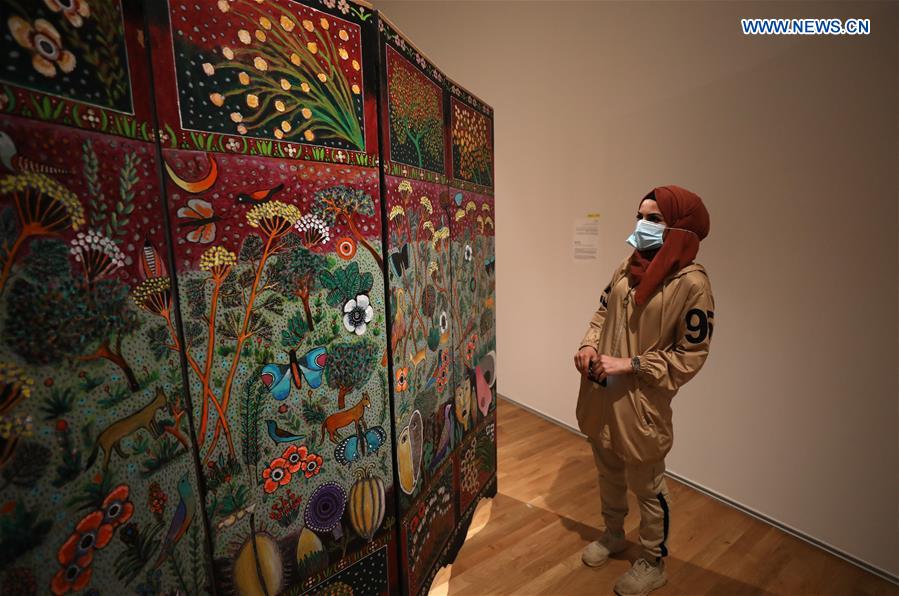
A woman visits a local exhibition called "Control of Weeds" in the West Bank city of Ramallah, Sept. 1, 2020. A total of 33 Palestinian painters and visual artists have succeeded in reviving dozens of various Palestinian plants' history, which were eliminated during the British colonization of Palestine. (Photo by Ayman Nobani/Xinhua)
by Sanaa Kamal
RAMALLAH, Sept. 7 (Xinhua) -- A total of 33 Palestinian painters and visual artists have succeeded in reviving dozens of various Palestinian plants' history, which were eliminated during the British colonization of Palestine.
During a local exhibition called "Control of Weeds" organized by Abdul Muhsin al-Qattan Foundation in Ramallah city, each artist showed his or her own visual art or painting about one kind of the heritage plants.
"Those plants have been eradicated by the British mandate when it colonized our Palestinian lands, which was harmful to the cultivation," said Yazid Anany, the exhibition's director.
Among those plants were camphor flower, prostrate knotweed, orobanche, anemone coronaria, in addition to dozens of other plants.
Anany said he and his team found official documents proving Britain's involvement in ending the wild plants in Palestine in order to serve the colonial interest of its country.
Based on the documents, researcher shared statistics and field experiments on methadone and other chemicals to curb crop weeds and control their growth and propagation.
"The British army urged the Palestinian farmers, who did not know the negative effects of their actions, to eradicate different kinds of wild plants, in order to expand the agricultural lands to cultivate wheat crops," he added.
Meanwhile, Palestinian archaeological studies confirmed that the agriculture activity in the area dates back more than 10,000 years.
The diversity of plants in Palestine is an essential part of its successive civilizations that used to depend on many plants and crops and hybridize several different types, noted Anany.
According to those studies, the Palestinian residents were able to preserve their botanical civilization through archaeological inscriptions that were carved on the walls and floors of churches, mosques and homes, in addition to some archaeological palaces.
Ola Zeitoun, a 29-year-old visual artists who participated in the exhibition by producing a camphor flower model, told Xinhua that the plants are an essential part of Palestinian heritage and folklore, especially as they are still used in traditional medicine to treat several diseases.
"Every plant has a value for the population, but the British colonialism attempted to erase these plants from our memory and conceal their importance," she explained.
"I am proud of participating in such a national exhibition, which revives the history of wild plants," she said, adding that "the occupation does not determine our relationship with plants, but rather we determine that relationship."
Moamen Badana, a visitor from Ramallah city, told Xinhua that this exhibition had succeeded in bringing him back to the Palestinian civilization.
"It is necessary to organize more heritage exhibitions of this sort to keep people remember the lost Palestinian heritage due to the succession of occupation governments in Palestine," the young man said. Enditem



